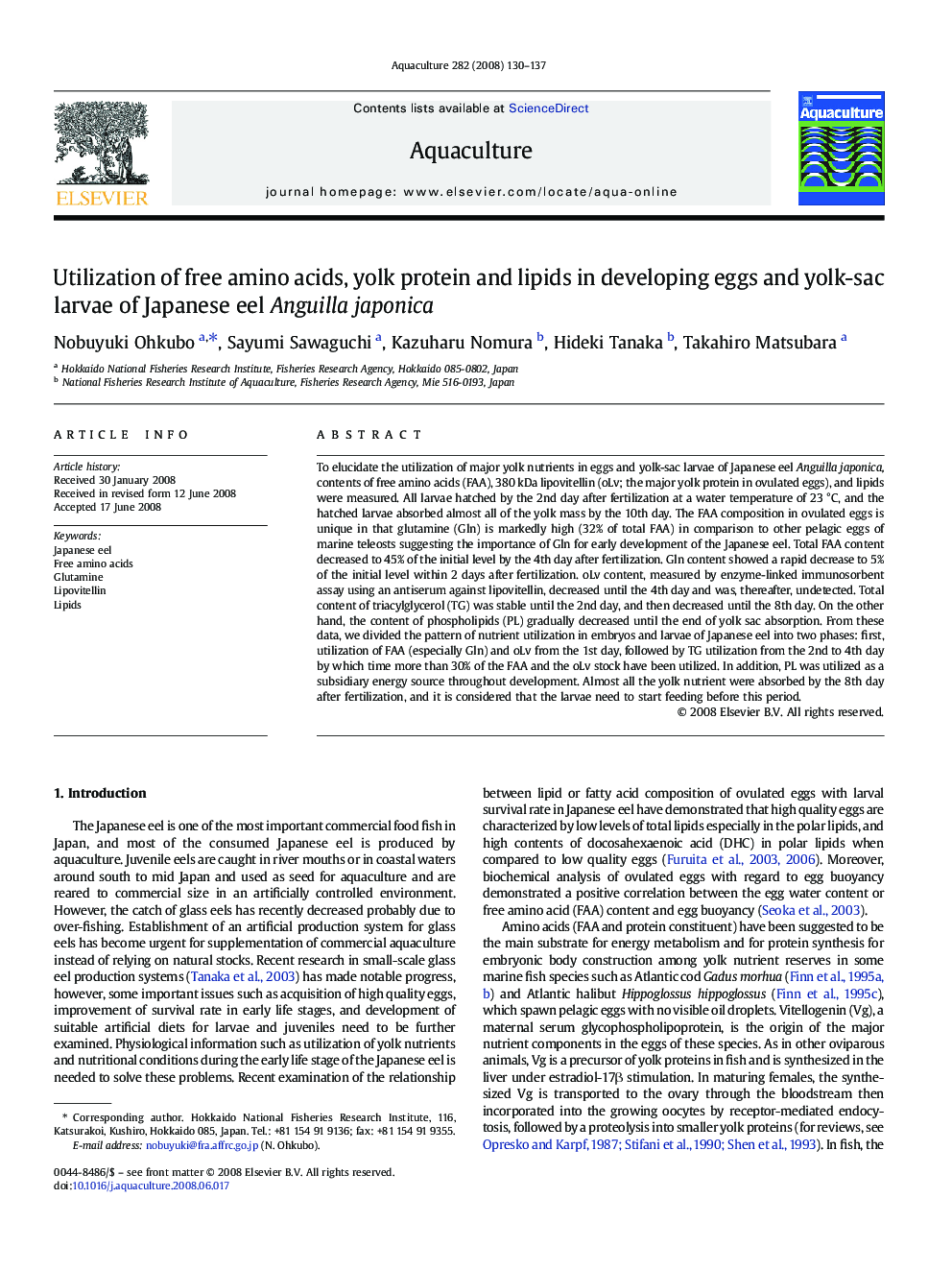| کد مقاله | کد نشریه | سال انتشار | مقاله انگلیسی | نسخه تمام متن |
|---|---|---|---|---|
| 2424575 | 1552959 | 2008 | 8 صفحه PDF | دانلود رایگان |

To elucidate the utilization of major yolk nutrients in eggs and yolk-sac larvae of Japanese eel Anguilla japonica, contents of free amino acids (FAA), 380 kDa lipovitellin (oLv; the major yolk protein in ovulated eggs), and lipids were measured. All larvae hatched by the 2nd day after fertilization at a water temperature of 23 °C, and the hatched larvae absorbed almost all of the yolk mass by the 10th day. The FAA composition in ovulated eggs is unique in that glutamine (Gln) is markedly high (32% of total FAA) in comparison to other pelagic eggs of marine teleosts suggesting the importance of Gln for early development of the Japanese eel. Total FAA content decreased to 45% of the initial level by the 4th day after fertilization. Gln content showed a rapid decrease to 5% of the initial level within 2 days after fertilization. oLv content, measured by enzyme-linked immunosorbent assay using an antiserum against lipovitellin, decreased until the 4th day and was, thereafter, undetected. Total content of triacylglycerol (TG) was stable until the 2nd day, and then decreased until the 8th day. On the other hand, the content of phospholipids (PL) gradually decreased until the end of yolk sac absorption. From these data, we divided the pattern of nutrient utilization in embryos and larvae of Japanese eel into two phases: first, utilization of FAA (especially Gln) and oLv from the 1st day, followed by TG utilization from the 2nd to 4th day by which time more than 30% of the FAA and the oLv stock have been utilized. In addition, PL was utilized as a subsidiary energy source throughout development. Almost all the yolk nutrient were absorbed by the 8th day after fertilization, and it is considered that the larvae need to start feeding before this period.
Journal: Aquaculture - Volume 282, Issues 1–4, 30 September 2008, Pages 130–137